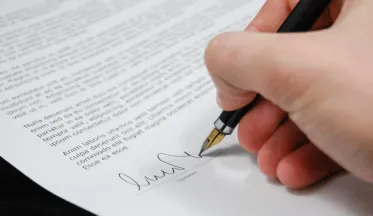Have Questions? Contact Us.
Since its inception, NYCLA has been at the forefront of most legal debates in the country. We have provided legal education for more than 40 years.

January 29, 2015
Ms. Terri Matthews
Chair, Committee on Construction Law
The Association of the Bar of the City of New York
42 West 44th Street
New York, New York 10036-6689
Re: Support for ABCNY Report on Modernizing New York’s Construction Laws
Dear Ms. Matthews:
We write to express our support for the report, 21st Century Construction, 20th Century Construction Law (“the Report”), authored by the Construction Law Committee (“the Committee”) of the Association of the Bar of the City of New York. We agree with the Report’s central proposition that the State’s built environment laws are inadequate to meet the current and future needs of public capital programs across the State. The statutes on public construction must be modernized in order to allow public owners to efficiently utilize public funds on critical public infrastructure and building needs.
Our committee members are very familiar with the shortcomings of New York’s existing laws on public construction. Although put in place to guard against fraud, waste and abuse, the statutes no longer meet the needs of modern projects, creating waste of the public fisc in different ways. Public owners are further burdened by the indirect costs that are passed along during construction, such as adherence to requirements that preclude newer financing methods. While most other states and local governments have effectively adopted laws to permit public owners to use alternative service delivery methods to develop public works, including design-build and construction management at-risk, New York’s laws deny these methods to most public owners. Public owners in New York are required to comply with outdated laws from early in the last century to deliver new or reconstructed public infrastructure and buildings. Public funds are thus wasted on processes with avoidable costs due to the mismatch of delivery methods with project needs.
As articulated in the Report, modern procurement laws would promote and protect public values more effectively and efficiently than current laws. The array of modern service delivery methods referenced in the Report, including alternatives to traditional design-bid-build, can help each of the participants better align their functions with project needs and outcomes and permit better collaboration among participants. Moreover, recent transformative technologies, such as building information modeling (BIM), can overcome dysfunctions that are embedded in the traditional – and often adversarial – roles employed in the design-bid-build methodology. The Report appropriately calls for modernizing the laws in New York while remaining reflective of New York State’s history and construction markets.
A total modernization of all of the State’s built environment laws would allow public owners to take advantage of modern technology, materials and service methodologies to meet modern infrastructure and building needs. The current infrastructure gap, heightened fiscal constraints, and untapped opportunities to streamline delivery and promote economic development support the modernization of New York’s construction laws.
We are pleased to support the Committee’s efforts to improve New York’s construction laws, as reflected in the development and issuance of the Report. We look forward to further dialogue with your Committee regarding your efforts.
President
Lewis F. Tesser
President-Elect
Carol A. Sigmond
Vice President
Michael J. McNamara
Secretary
Megan P. Davis
Treasurer
Stephen C. Lessard
Immediate
Past President
Barbara Moses